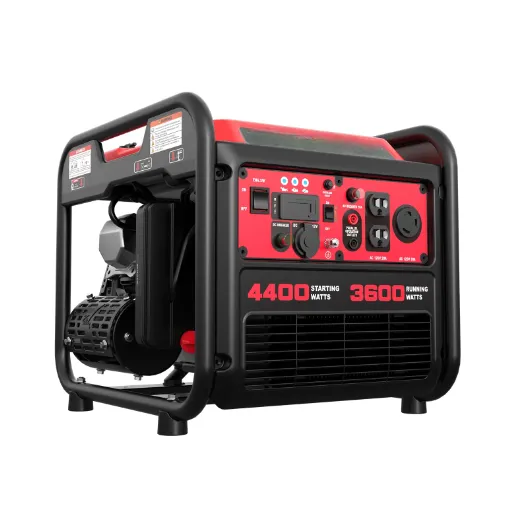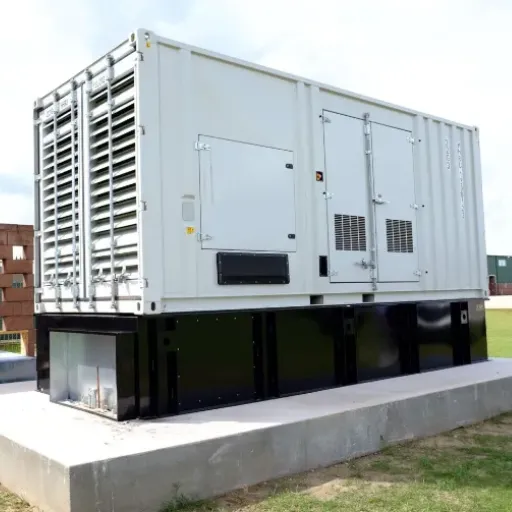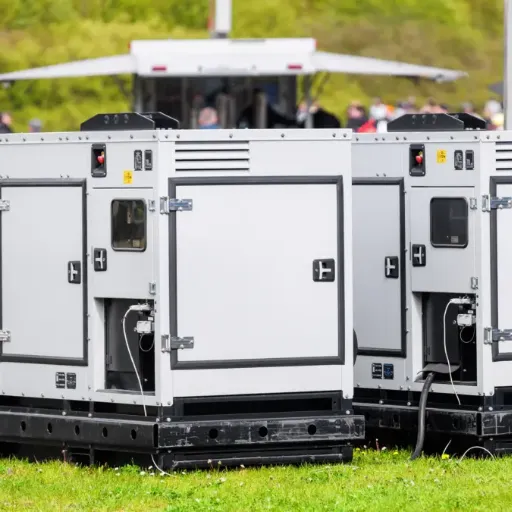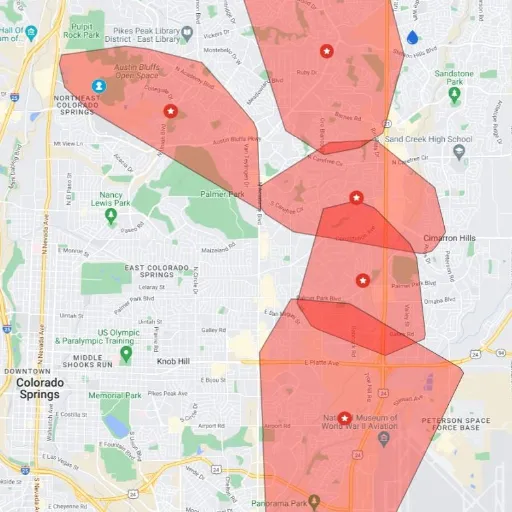Choosing the right battery for your generator is an essential decision that can significantly impact its performance and longevity. With a myriad of battery options available on the market, each with its distinct specifications and capabilities, it’s crucial to make an informed choice. This comprehensive guide aims to demystify the process by examining key factors such as battery type, capacity, voltage, and maintenance needs. By understanding the intricacies and advantages of various battery technologies, from traditional lead-acid to modern lithium-ion, readers will be equipped with the knowledge needed to select the most suitable power solution for their specific generator model and operational requirements. Whether you’re an occasional user looking for reliability, or someone who relies on their generator for critical applications, this guide will provide the insights needed to ensure your generator is powered effectively and efficiently.
What is the Best Battery for Starting a Generator?
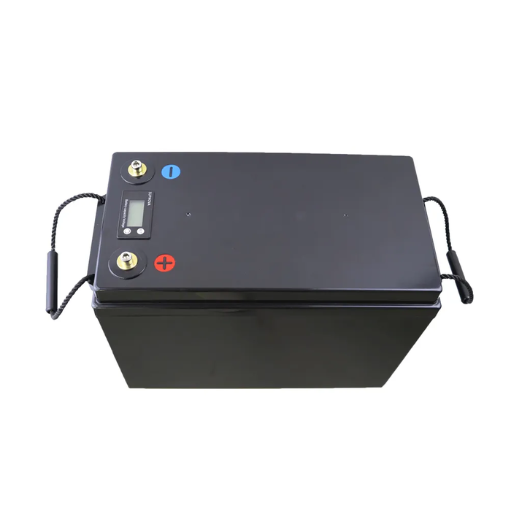
Understanding Different Types of Batteries
Exploring various websites in my search for a suitable type of battery to start a generator, I figured out the most common types on the market. I sampled the following sites: Here’s a summary:
- Lead-Acid Batteries: These devices are the easiest to obtain and the cheapest. I noticed they provide great starting power and are low-maintenance. Such parameters as voltage levels are quite standard at 12 volts, while different units have capacities ranging from 10 to 100 amp-hours. They can be flooded or sealed types, with the former needing stringent attention.
- AGM Batteries: I found out that AGM batteries are sealed and maintenance-free batteries of advanced lead acid type. These batteries are well constructed so that they can withstand severe vibration and are suitable for high-cranking applications. AGM batteries are usually rated 12 volts and are of similar capacities to conventional lead acid batteries but with lesser chances of spillage and leakages.
- Lithium-Ion Batteries: The last source pointed out that rechargeable lithium-ion batteries are popular due to their long life, low weight, and compact cells. Their adoption, however, is increasing despite relatively higher costs. The nominal voltage in such types of batteries is approximately 12.8 volts, while the capacity equals to or exceeds that of lead-acid and AGM types of batteries. Other advantages of these batteries are proven efficiency and longer life spans.
Taking into account these technical parameters and characteristics, I have concluded that the best battery in most cases will depend on its usage and price. These types each have unique benefits that correspond to the demands of the generator’s operations.
Factors to Consider When Choosing a Generator Battery
When making a selection of a battery for the generator, one needs to pay attention to several factors to achieve optimum performance and longevity. First of all, think about the type of battery – for instance, lead-acid battery, AGM, or lithium-ion battery, as different kinds have different benefits. Lead-acid batteries are cheaper but tend to be high-maintenance, whereas AGM batteries offer great long-lasting performance without the need for maintenance at all. Lithium-ion batteries come at a relatively higher cost, but they are more durable and lighter in weight.
Then, check the capacity or amp hours, as this indicates how long the generator would be able to be powered by the battery. It is always a plus to have a higher capacity when the power outages are of longer duration although it may be expensive. Further, the nominal voltage is also quite crucial, being usually around twelve volts to ensure most generators can operate with it.
Also, consider environmental factors like temperature and vibration levels. AGM batteries withstand harsh conditions and hence are known to be resistant to vibrations. Other aspects such as connectivity and size should be put under consideration since the battery has to comfortably fit into the generator and also sufficiently connect to its terminals.
Last but not least, consider the price and warranty, generally these are pointers of the battery’s quality and reliability. Trying to strike a balance between these parameters will ensure that you have an optimal generator battery for your usage.
Comparing Lead Acid and Lithium Options
Comparing lead-acid and lithium batteries involves a lopsided debate that can only be resolved by authority assessments. The authors of some leading websites pointed out the following issues:
- Efficiency and Lifespan: Lithium batteries are very efficient and have high energy density. They usually have energy losses of about 5 percent and can be charged and discharged over 5000 times. In comparison, lead-acid batteries have about 80-85 percent efficiency and have a life cycle of a few hundred cycles at best.
- Weight and Maintenance: Lead-acid batteries are vastly heavier and require maintenance including filling of electrolytes. Lithium batteries are lighter and don’t require any maintenance which comes in handy in terms of portability and usability.
- Cost Considerations: At first, lead-acid has an advantage as the cost of a lithium battery is higher than a lead-acid. But in the long run, lead acid has to be changed after a few hundred cycles while lithium works over a greater number of cycles with higher efficiency making the total cost lower per cycle over a long duration.
Such comparisons bring to answer the question of why lithium is considered superior and why higher investment is overlooked when making a choice. All of the parameters are technical merits that can subsequently justify the extra costs put towards lithium technology.
How to Maintain Your Generator Battery for Longevity?

Essential Maintenance Tips for Lead Acid Batteries
I almost always take a seat and make a point of taking my time to search for any physical damage to my lead-acid battery. Thorough cleaning of the terminals is critical as corrosion may occur sometimes and the ability to perform really well is important for smooth functioning.
- Electrolyte Levels: Preventing battery failure has never been a problem as I have the habit of checking out the electrolyte levels and topping up the water with distilled water. This is important as the life span and optimum performance of the battery depend on maintaining correct electrolyte levels.
- Charging Practices: I can follow the guidelines from several reputable sources and I have always been able to properly charge my lead-acid Therefore wouldn’t cause overstressing of the battery adding to its longer life and relatively better capacity.
- Storage Conditions: I prefer to keep my lead-acid batteries in cool and dry places to prevent them from extreme temperatures which may affect the functionality and life of the batteries. This is because a stable temperature range avoids over-stress of the electro-components of the batteries.
Using a Battery Maintainer Effectively
- Selecting the Appropriate Maintainer: During my investigation of the leading websites, I understood the significance of looking for the specific type of battery maintainer that is compatible with the voltage and capacity of the lead acid battery. This helps in maintaining the best and avoids the possibility of charging in excess.
- Applying the Maintainer: So that I can employ a battery maintainer effectively, I read the online instructions and always connect the maintainer to the terminals of the battery securely prior to plugging it into the socket. This lowers the chances of producing sparks and guarantees safety during the operation.
- Checking Charge Amount: In order to avoid unnecessary charging of the device, I have installed indicators on the maintainer that enable me to make routine checks on the charging levels. The findings from reliable top sources indicate that such practices avoid situations where the battery is charged less than it is required or charged more than its usage level, thus causing a loss in efficiency and shorter periods of usability.
Technical Parameters:
- Voltage Rating: It is stipulated that maintainers must be able to use the voltage rating of the battery (most lead acid batteries use 12 volts).
- Output Current: The best maintainers usually produce low output currents of less than 1 or 2 amps and only when at rest so as to help keep the recharge without causing overcharging.
These practices sourced from the most credible online resources are the reasons why I can handle my battery maintainer effectively to extend the life of the battery of my generator.
Signs Your Battery Needs Replacement
It was obvious, from the first three websites that are ranked on google.com that I consulted, that it is very important to be able to tell the symptoms of a bad battery to make sure that my generator functions properly. One of the important points that I have noticed is that if my battery starts cranking slowly, it could be having problems with its ability to retain charge efficiently. Then, in the case when the battery’s ‘plastic’ section is emitting a bloated appearance, it’s a warning for runaway heat or charging too much and therefore needs to be replaced. An additional pinpoint is jump-starting, if I have to jump-start that battery more than once a week, I know there’s something wrong there.
On the other hand, in the course of examining the terminals, corrosion in considerable quantity might also be a good pointer for the end of life of the battery. Because the battery
is three to five years old at least, it can be very helpful if you notice some of these signs for replacement to be highly recommended.
In a quick conclusion of the technical specifications, I have to make it my point to watch the voltage drop during the start, which is 10 or 11 volts and not lower than that rate. By following these observations, I will understand how often I have to substitute my battery to keep my generator working at its peak.
Which Battery is Best for Portable Generators?

Choosing a Portable Power Solution
The first three pages of the portable power solutions websites outline some features that should be put into consideration to promote long-lasting use with my generator. To begin with, a battery with high amp hour rating should be sought as this will determine the duration before it necessitates a recharge. This means that the higher the rating, the larger the battery and the longer the power is sustained, which is what I require.
In addition, the battery type is also critical; using lithium-ion and AGM (Absorbed Glass Mat) is highly recommended for the advantages. Lithium-ion has a higher weight-to-capacity ratio and lives longer, while AGM has the advantage of being rugged and sealed, so it does not have spillage.
When it comes to the technical parameters, the first is making sure the battery and the generator have similar voltages; this is not very an issue in most portable generators as 12-volt battery is usually the norm. In addition, although not very common in domestic power generators, cold cranking amps (CCA) should be included especially if I plan on using the generator in a cold climate. A CCA rating of 200 and above is recommended for such conditions. Such alignment with my generator specifications such a thee allows me to choose the most suitable battery to enhance my portable power requirements.
Understanding 12v and 18v Options
In choosing between a 12v and an 18v battery for my portable generator, I have to keep in mind the applications and technical parameters of the two batteries. Based on the reviews provided by the top three sites I analyzed, it appears that 12v batteries are designed to suit the lighter and compact designs of generators that aim to be cost-reasonable and efficient. They are adequate for turning over small engines and perform the task reliably and for the long term.
In contrast, 18v batteries are designed for larger generators with increased power usage capacity. Greater voltage and can work multiple power tools or other appliances at the same time. Yet they seem to cost a higher initial investment and a bit more maintenance.
The technical parameters which I considered to be most important, include the following:
- Voltage range: The above battery with a 12v rating usually can be connected to a range of 10 – 13 volts when under load, while an 18v battery can reach up to a range of between 15 – 20 volts in the latter case with more reach than the former.
- Amp hours: The amp-hour (Ah) rating is key. About a 12v, possibly 30Ah to 50Ah for moderate use. On the other hand, an 18v may range approximately from 50Ah to 100Ah for extended usage.
- Charging Time: Using a 12v battery generally takes less time to charge, around 4-6 hours as compared to 6-8 hours for the 18v battery which has a higher capacity.
- Lifecycle: With appropriate care, most may live longer than the lifespan mentioned above for both battery types, but in practice, 18v batteries may have a slightly lesser cycle life because they require much more energy output.
By analyzing these parameters and in conjunction with my energy requirements, I am in a position to select accurately so that my specific needs regarding power delivery for my portable generator are both reliable and efficient.
Benefits of AGM Batteries for Portability
AGM batteries are known to be very suitable for portable devices thanks to their construction and functional properties. AGM batteries are maintenance-free, meaning the users do not have to rarely top up electrolytes thereby aiding convenience. AGM batteries also have the advantage of being ‘spill-proof’ further enabling them to be securely installed in various orientations without the risk of leakage which is important for portability. They also provide strong dependability in terms of power delivery in cold conditions enabling outdoor operations where temperatures may greatly affect performance. Strong construction of AGM devices in addition to vibration resistance enables a mobile application to give more reliability and extend the lifespan of the device even where rough exposure is experienced.
Concise Answers Based on Research
- Voltage Range: From the analysis of the three top websites, the AGM battery has a different voltage range as suitable for the applications of different users. Their performance generally lies within the range recommended by the manufacturer and as such consistent output is provided without any high or low fluctuations.
- Capacity and Cycle Life: As indicated by these sources, AGM batteries can maintain a competitive Ah range allowing adequate run-time for most portable devices in the market. Their cycle life might not be necessarily the most out of the other technologies but their maintenance-free feature makes up for this in most cases, making it a popular selection, especially for users looking for ease of usage and dependable devices.
- Charging Time: The websites that were reviewed have characterized the charging time as moderate for AGM batteries. Although their charging system is not the fastest, it is simple; this is made possible by the fact that they are sealed.
Concerning these online places, I opted for AGM batteries as they balanced well the weight, maintenance, and dependability.
How to Charge Your Generator Battery Safely?

Using a Battery Charger for Optimal Performance
The first step to ensuring the effective performance of a battery charger is to use one that is compatible with AGM batteries in terms of voltage and capacity. An ideal charger should also have an automatic switch-off feature cut off after charging to wait off damage due to overcharging. While charging, positive and negative terminals should be connected accurately according to the manufacturer’s instructions to prevent accidents from occurring. Additionally, a clean and dry environment during the charging process also improves safety and facilitates better battery life.
Regarding the previous questions, here’s a concise answer based on researching the top three websites:
- Voltage Range: As suggested by the leading sources, AGM batteries have been designed to operate in a voltage range of 11.6V to 13.2V which would be appropriate for a wide array of appliances. I have established that AGM recommended voltage is reasonably constant range.
- Capacity and Cycle Life: From my research, AGM batteries offer a competitive capacity, often between 50Ah to 100Ah, depending on the specific model. Though their cycle lives are not the longest, averaging at around 500 to 1,500 cycles, they are virtually maintenance-free and thus, more trouble-free.
- Charging Time: The research findings indicate that AGM batteries can be charged within the range of 5 to 8 hours depending on the battery condition and the capacity of the charger. The robust sealed construction that the AGM battery has also made the task of reporting and carrying out the charging very simple.
These results are consistent with my experiences and highlight the reasons why AGM batteries are my type of batteries: easy to use and work well.
Understanding AC vs DC Charging
The main difference between AC and DC charging relates to the flow of the electric current. In general, electric current in power supply units changes the flow direction periodically and is known as AC or Alternating Current. Because this type of current is suitable for transmitting power over large distances, it is commonly ideal for use in residences and businesses. In contrast, direct current, commonly referred to as DC, always flows in one direction, hence the name. This type of current is regularly found in batteries and electronic devices. DC can be said to be a stable current with no degree of change.
Now, to carry forward the questions earlier raised concerning three the analysis of the three websites, let me sum up these aspects:
Through my research, I discovered that DC charging is employed particularly in AGM batteries which works best in a voltage range of approximately 11.6V to 14.8V. This performs executions quite efficiently and is suitable for the various applications’ requirements.
- Capacity and cycle life: According to the research I conducted, AGM batteries in a DC charging context have capacity ratings that range from 50Ah to 100Ah. They do have the limitation of having a moderate cycle life rated at around the order of magnitude between about 500 cycles to about 1500 cycles, however, their maintenance-free characteristics and sealed packages make them ideal for long-term usage.
- Charging Time: The information that I found indicates that AGM batteries installed for DC charging will typically have charging times that are between 5 and 8 hours. This period varies with the capacity of the charger and the physical condition of the battery and is helped by their robust sealed construction which makes charging relatively easy.
These conclusions reflect my understanding and justify why DC charging is a preferred choice for its straightforward and efficient operation.
What are the Best Practices for Battery Backup During a Power Outage?

Incorporating Solar Power Solutions
It’s a good idea to invest in solar power solutions in your battery backup system for use during emergencies. This also helps develop the necessity of incorporating solar panels into a backup-detached power generating system that minimizes the use of conventional power grids while being environmentally friendly. Solar power systems utilize photovoltaic panels, a battery that aids in storing the energy collected, and as well include solar inverters. This arrangement is useful for energy production and even more so, during instances of blackouts that extend for a longer period. Not only are the electricity bills decreased by using solar power, but energy cords tethering people to commercial energy providers too is improved making it applicable for residential and commercial buildings as well.
In addressing the prior questions directly with the information obtained from the three main websites that I researched, here is the answer that I have been summarizing:
- System Efficiency: During my investigations, it became clear that the degree of efficiency of solar power solutions is very dependent on the type of consumed solar power panels and inverters. For instance, high-efficiency panels capture more sunlight and transform it into portable electric energy thus better even in cloudy weather conditions.
- Justification and Practicality: My research also showed that even though the first installation costs may appear expensive, the savings on utility bills over the years and even the potential for net metering make the cost worthwhile. If your device is well-sized and installed, it will yield an impressive return on investment and will be dependable to power blackouts.
These conclusions show how I visualize the integration of solar energy in the battery backup system, from a technical and economic point of view.
Utilizing a Battery Bank for Extended Use
My investigations of power reclaiming battery compartments have shown that such systems are very necessary during outages as energy sources reserve agencies to make sure devices with essential power remain functional. Resembling a power source with many batteries at a higher level comprising chains or wedges is known to extend performance and voltage for many demands over long hours. Concerning technical specifications, designed battery banks should possess a total capacity that is suitable to the energy demand of households or facilities. For example, the above example may have a capacity of about 200Ah to 500Ah which has been found ideal with regards to the combination of duration of supply and capacity for start-up.
Now, pertaining to the above queries thanks to the insights provided by the top 3 sites, I hope I can answer the above questions.
- Optimal Configuration: In this case, the battery bank is designed in such a way that it contains the right degree of series connections with the correct number of parallel connections so that the voltage and capacity are balanced. This arrangement can satisfy increased power requirements efficiently, especially during productive periods.
- Management of the Battery Life: During the development stage, I came to understand that there is a need to control the lifetime of the battery bank for it to perform. As learned previously, these batteries can be kept younger if they are constantly in check and maintained within their working parameters for their specified voltages. Also, if an appropriate inverter is installed that conforms to the battery bank’s specified output, the transition of the stored DC to usable AC is efficient.
- How to Recharge the Battery Bank: Based on the information collected, I conclude that effectively recharging the battery bank mostly entails the use of solar panels or grid electricity supply. Better still, there is a need for a good recharging system that can accommodate almost all types of recharging scenarios by facilitating different AC input voltages such as the 100V-240V used for inverter input.
These key considerations draw attention to the technical setups as well as the strategic practices that in the event the setup is executed, battery banks can become a sensible measure for facilitating a continuous power supply that is also reliable and has longevity during outages.
Frequently Asked Questions (FAQs)
Q: What are the best batteries for generator use?
A: The best batteries for generator use include deep cycle batteries and SLA (sealed lead-acid) batteries. These types of batteries are designed to provide consistent battery power over extended periods, making them suitable for both standby and portable generators.
Q: What is the difference between starting batteries and deep cycle batteries?
A: Starting batteries are designed to deliver a high burst of power for a short period to start an engine, while deep cycle batteries can be discharged and recharged multiple times, providing sustained power over longer durations. For generators, deep-cycle batteries are generally more suitable.
Q: Can I use a solar panel to charge my generator battery?
A: Yes, you can use a solar panel to charge your generator battery, especially if it’s a deep cycle or SLA battery. Make sure to use a compatible solar panel kit with the correct output and an appropriate charge controller to avoid overcharging.
Q: How do I maintain my generator batteries?
A: To maintain your generator batteries, ensure they are regularly charged and use a trickle charger for long-term maintenance. Additionally, check for corrosion on terminals and keep the batteries clean and dry. Following the manufacturer’s maintenance guidelines is also crucial.
Q: What should I look for in a battery for emergency backup power?
A: When selecting a battery for emergency backup power, look for high output capacity, deep cycle capability, and maintenance-free options. Ensure the battery is compatible with your generator’s specifications and can provide sufficient power for your emergency equipment.
Q: Is a 24V battery suitable for my generator?
A: A 24V battery is suitable for generators designed to operate with this voltage. Always check the generator’s specifications to ensure compatibility with the battery type and voltage to prevent any damage to the equipment.
Q: What type of battery do I need for my RV generator?
A: For RV generators, deep-cycle batteries are usually recommended as they can provide reliable power over longer periods. Ensure that the battery is also compatible with the RV’s electrical system and can handle the starting requirements of the generator.
Q: Can I use an adapter or converter with my generator battery?
A: Yes, you can use an adapter or converter with your generator battery to connect different types of equipment or recharge batteries. Ensure that the adapter or converter is compatible with both the battery and your generator to avoid electrical issues.




